…..as today is International Women’s Day 2015 we thought you might like to read this article/interview by Eilon Paz from his Dust & Grooves website with renowned ’60s Girl Group record collector Sheila Burgel..
I walk down Sheila Burgel’s street nearly every day for my ritual coffee and biscotti break. I must’ve passed by her home a hundred times, never realizing we were neighbors, nor what an amazing collection of records lay hidden in her Brooklyn brownstone apartment.
Aside from a slim section of 45s titled “Boys,” and a stash of heavy metal LPs, there are few men to be found in Sheila’s girl-pop-heavy collection. She is particularly sweet on ’60s female pop, and has been a longtime collector of US girl groups, French Yé-Yé singers, and British and Japanesebeat girls. Born in Tehran, Iran and raised in the suburbs of New York, Sheila received her music education via her dad’s extensive collection of ’80s chart-pop regularly blasting throughout the house. She developed a keen ear for hooks and melodies, which may explain her affection for ultra-melodic girl groups like the Ronettes and the Shangri-Las. She started collecting as a student in London, cutting class to go to record fairs and spending weekends traveling around the UK in search of “spectacular singles.” It’s no wonder she found herself pulling mostly 45s.
Perhaps more than most, Sheila’s passion has clearly shaped her identity. Her apartment is filled with ’60s furniture, vintage magazines, and music memorabilia, reflecting her love of mid-century design and pop. The forward-thinking and eye-catching images of the Supremes, Brigitte Bardot, and Françoise Hardy inspire her style all the way from her shoes to her eyeliner. Yet she considers her love of vinyl to be an alternative to the traditional feminine ideals of fashion and beauty – forgoing clothes shopping for solo digging trips to Tokyo, Paris, and Utrecht.
Her love and understanding of music is evident in everything she does. As well as being a DJ and a music journalist, Sheila publishes fanzine-turned-web magazine Cha Cha Charming and produces ’60s girl-pop compilations for reissue labels like Ace Records and Rhino. Asked why she focuses on girl-pop, she replies facetiously, “Perhaps it’s simply because girls are better?”
Tell me about yourself
My name is Sheila Burgel. I was born in 1977 in Tehran, Iran and was raised in New York City and the ‘burbs. I am currently living in Brooklyn, NY.
What’s playing right now?
Bobbie Gentry’s “Mornin’ Glory.” I’m putting together a morning-themed mix for my web-mag, Cha Cha Charming, called “Breakfast In Bed.” There couldn’t be a better song to wake up to.
What was your last purchase?
The Bronzettes’ “Hot Spot” on Parkway, which I picked up this past weekend at the Allentown 45s + 78s records show—the dream fair for a 45 collector.
What was the first album in your collection?
The first album I swiped from my father was Michael Jackson’s Thriller, but this was at age six, when I wouldn’t have yet called myself a record collector. I caught the collecting bug 12 years later, at 18, in London. The first girl-pop record I bought was Twinkle’s “Terry,” a British death disc that took its cue from the Shangri-Las’ “Leader of The Pack,” which was initially banned by the BBC.
Twinkle’s “Terry” was the 45 that started it all. Here she is attempting an English and less raucous version of France Gall’s “Poupee de Cire, Poupee de Son.”
Where did your love of music come from?
Definitely my dad, who was never indoors without a record playing. He made his own stereo, which he built into a pristine white cabinet behind closed doors. Opening that cabinet felt like entering the gateway to heaven.
I remember accompanying him to Crazy Eddie’s where he’d pick up the latest hit singles in the ’80s, things like Eddy Grant’s “Electric Avenue,”Quiet Riot’s “Cum On Feel the Noize,” Hall & Oates’ “Maneater.” It’s not surprising I became such a pop aficionado with hits playing all day long. I can’t bear to listen to music without melody, which is probably why ’60s girl groups have so much appeal.
Why vinyl?
I grew up with vinyl. I remember rushing home from school to my records and turntable, spending hours with the lyric sheets and listening to the music whilst daydreaming. This past Christmas, I received a reissue of a book from 1977 called Album Cover Album. Peter Gabriel wrote the foreword of the updated edition, lamenting the loss of record sleeves and describing vinyl as “physical objects to possess, touch, sniff, scrutinize, read, and savor.” I love that description because it so perfectly illustrates the interaction with a record and how it requires you to engage with it.
We are told to believe that the all-access pass to music on the internet and the quick click of an mp3 have improved our lives, but I don’t buy it. Convenience and shortcuts do not enhance pleasure. But take the time to dig out a record, put it on the turntable, sit back and listen…that’s where the pleasure is. That’s where the relationship with music grows strong, that’s where the richness and depth are felt.
Barbra Streisand and Barry Gibb’s Guilty LP is my first memory of music. It also prevented my parents from strangling me as a colicky 2-year-old. They would put this on and I would fall asleep immediately.
What attracted you to girl pop groups?
I have always been partial to the female voice. I remember when my dad told me the Bee Gees weren’t women; I was devastated. I had been convinced their voices were female and I preferred it that way. When I first discovered the gazillions of female singers and girl groups who made records in the ’60s in the US, UK, France and Japan, I knew I had to have each and every record. I think many would agree that the ’60s were the renaissance period of the 20th Century, especially for music. Some of the greatest records of all time were written during the ’60s and many of those happened to be by girl groups. The Ronettes’ “Be My Baby,” the Supremes’ “Can’t Hurry Love,” and the Shangri-Las’ “Leader of the Pack” are the obvious choices, but this was a time when every songwriter, producer and artist was striving for a hit, and as a result the output of material was top of the line, exceptionally high in quality. Every drop of talent, every gorgeous melody was put into those records because competition was fierce and only the greatest records made the top of the charts.
Nowadays songwriters aren’t competing against Brian Wilson or Holland-Dozier-Holland to get in the charts, hence the outrageous amount of melody-devoid, half-assed junk that makes up the top ten. In the end, though, when it comes to the question of why I collect girl groups, it’s not something I fully understand myself. Perhaps it’s simply because girls are better? [Laughs]
It seems like your interest in ’60s girl groups has influenced your sense of style.
’60s fashion, pioneered by designers André Courrèges, Mary Quant and Pierre Cardin, was quite spectacular. I love the forward-thinking, ready-to-wear, flattering designs, which are far more creative than the uninspired looks you see on the street today.
It was a photo of Brigitte Bardot, with her big blonde hair, wearing a simple A-line pink dress and nothing on her feet, that pretty much determined my fashion sense. It feels quite odd writing about fashion seeing as I hate shopping for clothes and have only accumulated lots of dresses because I buy a few each year and never ever throw anything away.
Can you tell us a bit about the evolution of the girl group?
Early groups like the Boswell Sisters, the Chordettes and the Andrews Sisters were actual groups of singing girls, but I consider the girl group era to begin with the Chantels’ “Maybe” in 1958, followed by the Shirelles, who were the first girl group to score a #1 hit with “Will You Still Love Me Tomorrow.” The Shirelles were singing about being girls, about sex, about the confusing experience of being in love yet terrified that the guy you’ve just spent the night with may never call you again. This was revolutionary and miles away from the goody two-shoes songs of the Andrews Sisters. The charts will tell you that these girl groups resonated with the entire female population, who finally had music that actually spoke to their real life experiences. The records were not only sung by girls, but “Will You Still Love Me Tomorrow” and so many of the girl group hits were also written by girls—Carole King, Ellie Greenwich, and Cynthia Weil, who were penning song after song about being young and in love. The Ronettes’ “Be My Baby” is forever attached to Phil Spector, but it was Ellie Greenwich and her husband Jeff Barry who wrote the song. You just can’t fake records that good and that’s why they’re still with us today.
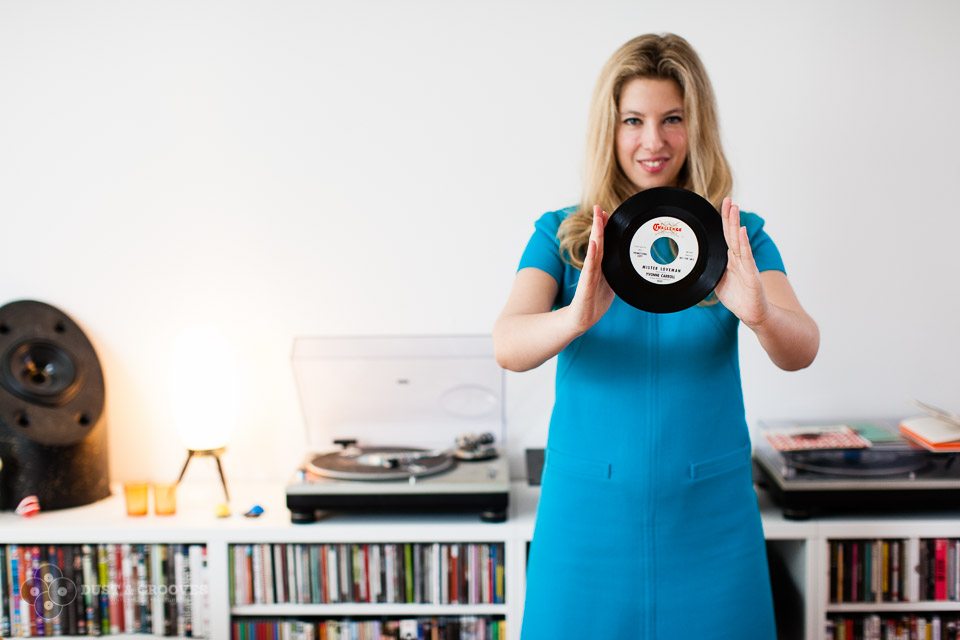
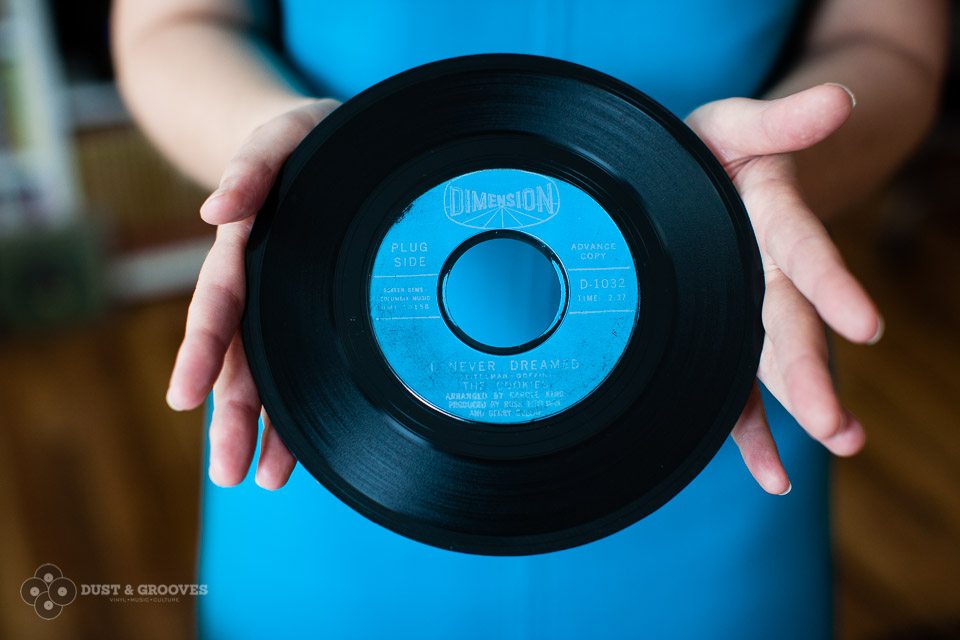
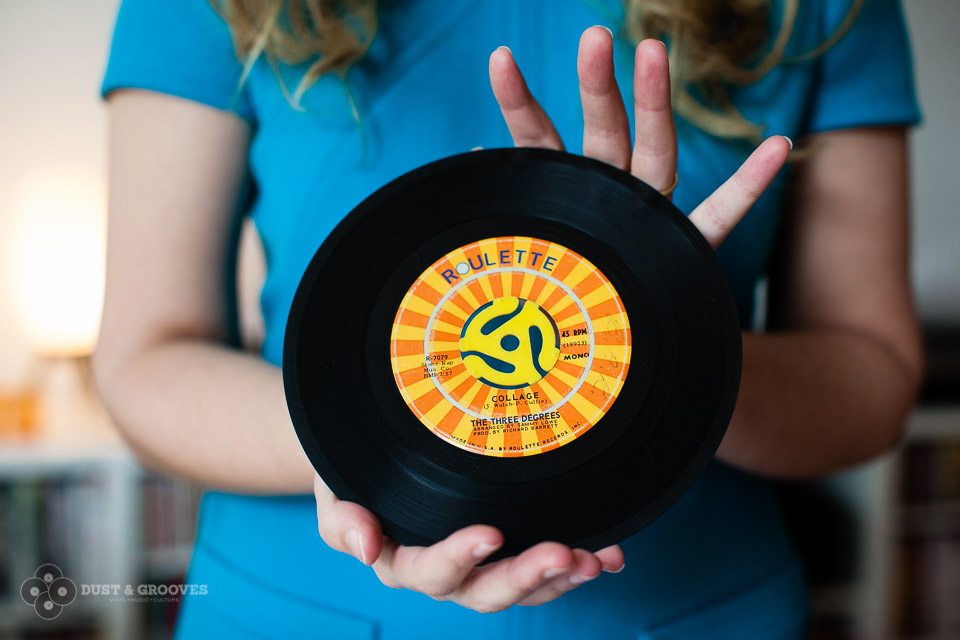
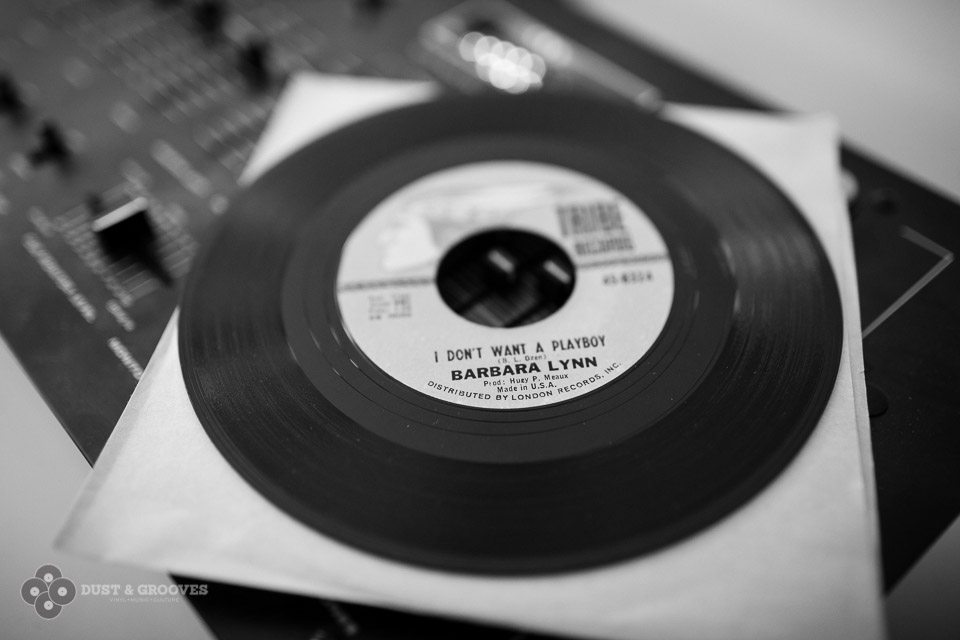
The death of the girl group era has always been blamed on the Beatles arriving in America, and perhaps by that time the public was ready for something new, but girl groups were still cutting records well into the late ’60s, an era that was especially kind to Brit girls like Sandie Shaw, Luluand Dusty Springfield. In Japan, the late ’60s were the prime period for the fuck-the-establishment music scene called Group Sounds and the Japanese beat girl.
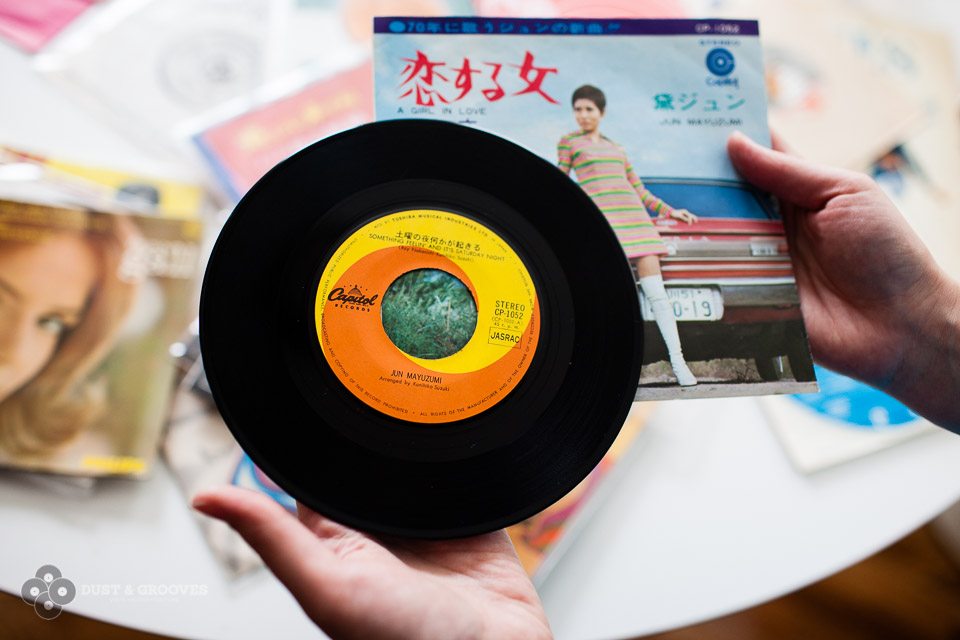
Many of the ’60s girl groups like the Three Degrees and the Supremes continued well into the ’70s but the sound changed with the times and the girl groups changed along with it. You can call the Spice Girls a girl group, but I hope no one would dare compare them to what the Ronettes, Supremes, Shirelles, and Shangri-Las were doing in the ’60s. That would be sacrilege!
My blood sugar level is rapidly increasing. Do you have something to take it down?
You know, just because we’re talking about girl-pop doesn’t mean that the records are all sugar ‘n’ honey. The Shangri-Las were tough as hell, singing about death and devastation and topics way ahead of their time. There are a myriad of fine examples of some heavy soul and freakbeat female-vocal records that couldn’t be less sweet. Jan Panter’s “Scratch My Back.” Dana Gillespie’s “You Just Gotta Know My Mind.” Sharon Tandy’s “Daughter of the Sun.” Barbara Lynn’s “I Don’t Want A Playboy.”
Are you a feminist yourself?
Of course! And I’d like to give a shout-out to Ben “DJ Scribe” Goldfarb for also calling himself a feminist in his Dust & Grooves interview. I’m a big fan of British writer Caitlin Moran, who asks the right questions of women afraid of the word feminist. “What part of liberation for women is not for you? Is it the freedom to vote? The right not to be owned by the man that you marry? The campaign for equal pay? “Vogue” by Madonna? Jeans? Did all that stuff just get on your nerves?” We live in a culture where rape is rampant, women still make less money doing the same job as a man, and the media is hell-bent on keeping us skinny, stupid, and celebrity-obsessed. YAWN. I’m so tired of the patriarchy. I’m so tired of the amount of horrific stories about rape and domestic violence that occur on a daily basis, yet leaders and lawmakers and the police do nothing because it’s a woman’s issue, and the women were asking for it, right? I’m so tired of women getting called sluts while men get pats on the back for screwing the entire world. Or when a man that beats the shit out of his girlfriend can still sell records and be lauded by the musical establishment (Ike Turner, Chris Brown). I wish more men were outraged and horrified by the world’s treatment of women, and I wish that women weren’t so afraid to call themselves feminists, fight for their rights, and challenge the status quo.
So no problem having these albums in your collection? [Refer to photo below]
No problem whatsoever! “My Pussy Belongs to Daddy” and “Please Mister Duff, Keep Your Hands Off My Muff” are some of the finest examples of feminist pop.
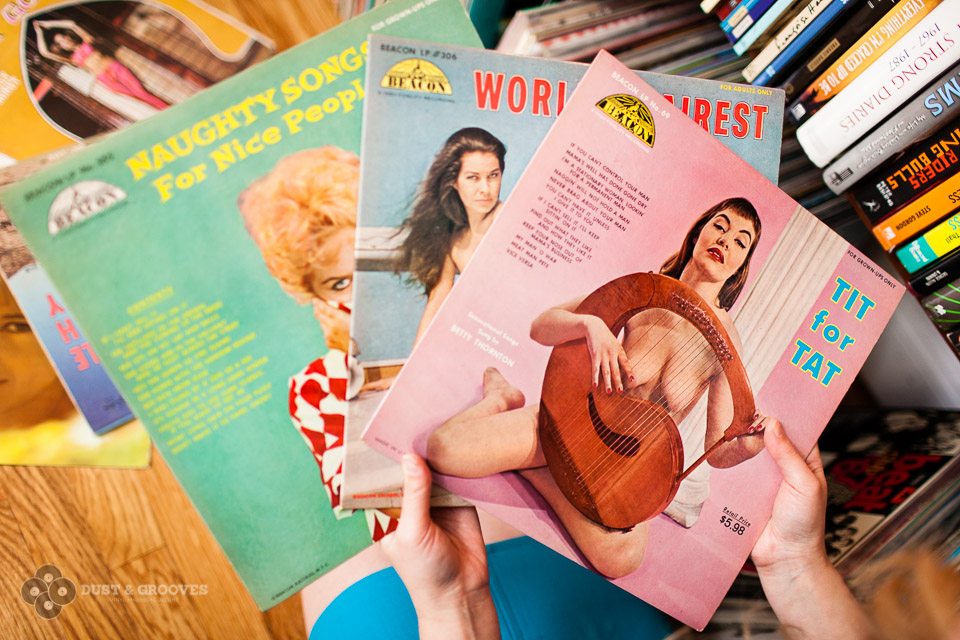
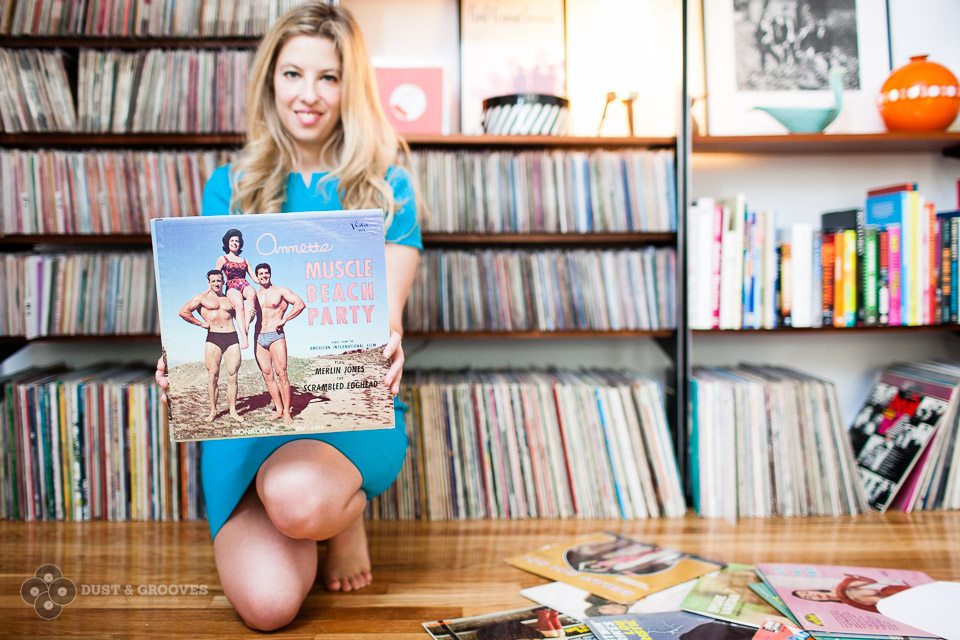
Give me a rundown of the strongest “girl power” albums.
I’ve always snickered at the term “girl power,” given its use and abuse by the Spice Girls, but I recently watched the brilliant documentary aboutPussy Riot, the feminist punk-art collective from Russia who were imprisoned for performing at the altar of Moscow’s Orthodox Cathedral, and the mother of group member Maria Alyokhina mentioned that the Spice Girls were a huge inspiration to Maria. So whether or not the Spice Girls’ “girl power” slogans were authentic, the message got across. As for the albums that I feel genuinely stood for female empowerment (whether knowingly or unknowingly), I’d have to say:
Bikini Kill: Revolution Girl Style Now! (self-released cassette)
The Breeders: Pod (4AD)
X-Ray Spex: Germfree Adolescents (EMI)
Bratmobile: Pottymouth (Kill Rock Stars)
Hole: Pretty On the Inside (Caroline)
Miss Universum: Selfelected (North of No South)
Babes In Toyland: Fontanelle (Reprise)
Lunachicks: Binge & Purge (Safe House)
Why do you think there are fewer female collectors? Or maybe they’re out there, but not really eager to show off their collection?
I’ve been wracking my brain for years trying to figure out why there appear to be so few female record collectors and I’ve found that Simon Reynoldsseems to have the most convincing theory in his mind-blowing book Retromania. He quotes a dude named Will Straw who suggests that men have this inherent need to assert their masculinity and if they are “alienated from or feel inadequate to the more traditional masculine ideals (leadership and physical strength, for instance),” they will find other avenues to assert their masculinity, becoming “authorities through their taste and cultural expertise.” I think the same can be said for women, although without the resulting need to flex our muscles and prove expertise, show off, become an authority, etc. Growing up, I felt completely alienated from traditional feminine ideals like the insane emphasis on meeting a man, beauty, exercise, shopping, diet, child-rearing, etc. Sure I like finding an awesome dress or putting on eyeliner, but I wouldn’t say I’m particularly interested in fashion or makeup. My life is music, and once you move beyond simply liking a few bands to becoming obsessed to the point of collecting, you, as a female, realize you’re entering a very male domain. Your love of music is equally deep, yet you share little of the desire to show off about it or engage in the “who has more records/who has more knowledge/who can get more obscure” competition. I think at some point I did attempt to work my way into the male domain, showing that I could “talk the talk” about obscure records, labels, and dates just as well as the boys, but I quickly found the whole one-upmanship just as dull as sitting around with women discussing their preferred diet routine.
Might there be more female record collectors out there than we imagine? I think so. They may just have little need to make their collecting habits public. There’s also very little room in the traditional collecting world for women. It’s a boy’s club, and if a woman can’t play like the men, she’s rarely encouraged to join in. Because in the record collecting world, you have to meet a certain criteria. You’d hardly be taken seriously as a collector with a small collection. Quantity matters. So does rarity and your knowledge about what you collect. What girl wants to bother being held to such silly standards when we’re already judged on just about everything else in our lives?
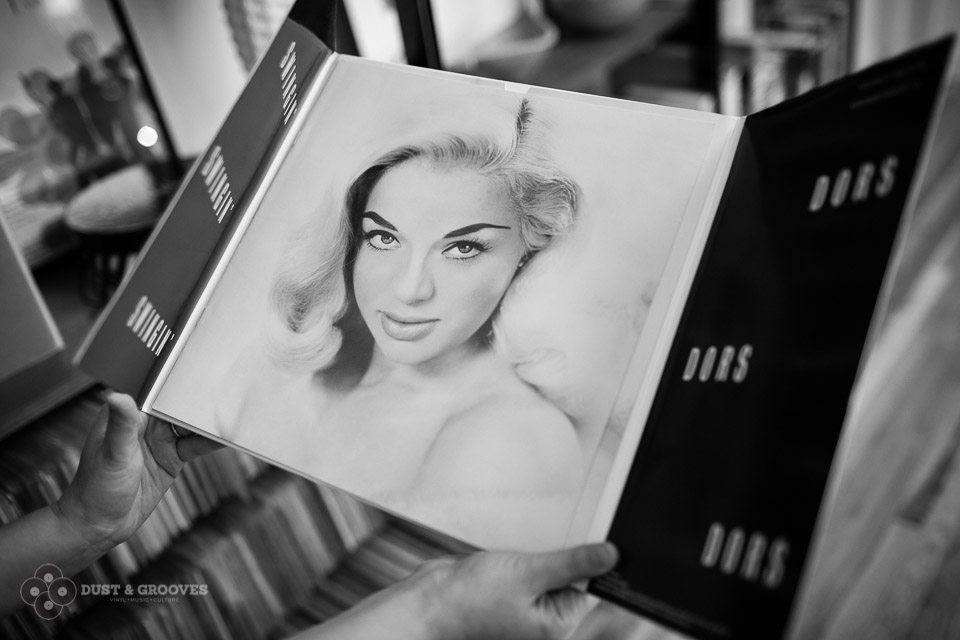
The notion that collectors are only as good as their collections is pervasive in the vinyl community. Why do you think that is? Is it important to herald the great collectors? What about small-time collectors? And what about the role money plays? Is something lost in being able to “buy” an impressive collection?
There’s a definite hierarchy in the record collecting community and a collector’s spot on the totem pole is largely determined by the size of their collection, rarity, quality, and also how long they’ve been in the game. It’s no surprise that someone who collects rare Northern soul or funk 45s is given more respect than, say, a collector of Madonna’s entire vinyl catalogue. Northern soul and funk are respected genres in record collecting circles, Madonna not so much. It’s also understandable that those who spend years digging up rare or obscure records are given more kudos than those who collect what’s more easily available. Our culture values hard work, struggle, the long hard climb to the top, the arduous tales of digging in dusty record shops in foreign lands. A person who can just buy up an impressive collection because he or she has a ton of money doesn’t fit with the accepted narrative, and thus isn’t quite looked at so fondly.
I think if you follow the traditional record collecting “rules” for who makes a better collector, the small-time collector isn’t going to rank very high. I remember this record dealer asking me how many 45s I had, and when I gave him the number, he was like, “Oh okay, you’re for real then.” I can understand both arguments, that the word collector implies that you should probably have quite a lot of whatever you collect, as well as the view that record collecting is simply an expression of a deep love of music. So if you have a small collection of records that you know inside out and adore, well, that’s quite a powerful expression of your deep love of music. There are some people out there with enormous record collections who collect for reasons that have little to do with the music, so should they be given greater respect just because they win the numbers game? It’s all debatable.
What about the the rest of your collection?
I have somehow stockpiled, though I don’t specifically collect, a lot of ’80s pop and New Wave, indie, metal, and classic rock. Megadeth was and probably always will be one of my all-time favorite bands, especially their album Rust In Peace. I will never tire of it. It’s a shame Dave Mustaine has become such a right-wing evangelical freak because he was once one of the smartest and most eloquent men in metal. Who else could come up with such irreverent titles like “Killing Is My Business…and Business Is Good!” and “Peace Sells…but Who’s Buying?”
How has your passion for vinyl affected the rest of your life?
When I first started collecting 45s, I was 18, living in London, and hanging out with people 20 years my senior because 18-year-old vinyl collectors didn’t exist. I have very few friends my age who collect records and my partner doesn’t own a single record, so it’s been predominantly a solitary endeavor for me.
I spent five years studying Japanese in order to find out more about J-pop and the Japanese girl-pop scene in the ’60s. I ended up living in Tokyo for over a year and would spend my afternoons traveling alone to record shops in obscure parts of the city. I did the same all over the UK, Paris, and New York. I took a solo vacation to the Utrecht record fair. I also DJ my 45s and that’s put me in touch with lots of folks worldwide who may not collect but definitely share my love of girl-pop. I’ve been really lucky to have gotten a few jobs thanks to my collection, my most prized job being theGirl Group Sounds, Lost & Found box set for Rhino Records which was nominated for a Grammy in 2005. More recently, I produced and compiledNippon Girls: Japanese Pop, Beat & Bossa Nova for Ace Records, which originally came out on CD and has just been reissued on purple vinyl in a gatefold sleeve.
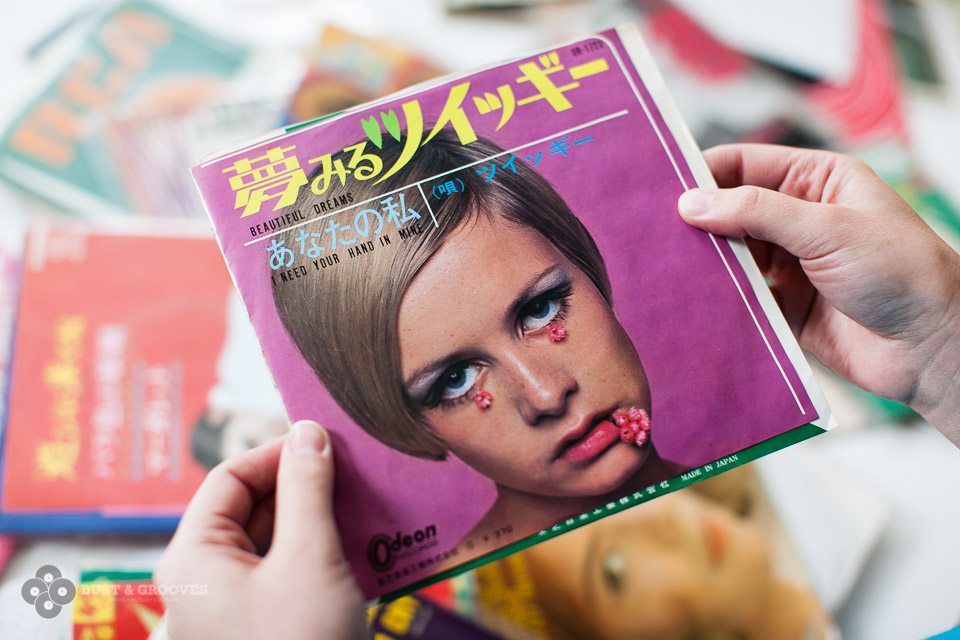
Where do you acquire your vinyl these days?
Record fairs are by far my favorite places to buy records. When I lived in the UK, I would cut class to go to record fairs and I often spent my weekends traveling to Birmingham, Bristol and Manchester to buy 45s. This was long before eBay so many of my most cherished girl group records were fairly cheap and easy to pick up. I’m so happy the Allentown record show still exists because it’s built around the 45. I do have eBay to thank for the many impossible-to-find records that have been on my want list for over 15 years. That would be Brunetta’s “Baluba Shake” and Connie Stevens’ “Tick Tock.” The 1-minute countdown to auction time is brutal and a game I feel guilty about playing, but you gotta do what you gotta do.
How do you organize your collection?
I divide my 45s first by country: Brit girls, US girls, French girls, Japanese girls, international girls (for the few Italian, Dutch, Spanish, Swedish, Chinese and German girl-pop records I own). Then there are the boys, which pretty much consists of the Beach Boys, Lou Christie, Del Shannon,Bobby Hebb, and the Bee Gees – mostly the men who sound like women. Within the countries, I arrange everything alphabetically. LPs are arranged by decade and genre: ’80s chart-pop, ’60s girl groups, ’60s boys, soft rock, metal and random shit.
What about your shelves? I’m guessing they’re not IKEA.
I’m obsessed with mid-century modern design. These shelves were made in the 1960s by George Nelson for Herman Miller. It took ten hours to put them up and they were ridiculously expensive but they’ve transformed my apartment and will hopefully last a lifetime.
For so many years, my record collection was split between London + NYC. Here’s the entire collection, finally reunited in Brooklyn!
What do you look for in a record?
Melody. Hooks. Magic. Anything above VG+. I always check for warping, because nothing makes me more depressed than finding out I’ve bought a warped record. Sometimes I’ll buy an artist’s entire discography (the Chiffons, Lesley Gore, France Gall, Francoise Hardy) or everything on a label that I trust implicitly (Red Bird, Planetary, Philles).
Vinyl sales have steadily increased during the past few years. Why do you think that is?
I’ve written a bunch of articles about this lately because I have very strong feelings about the meaning behind the resurgence of vinyl. As I mentioned earlier, I think there’s a realization that we’ve somehow been gypped by the promise of modern technology and convenience. With the CD, the artwork became less prominent, the sound colder and a bit too heavy on the treble. With mp3s, artwork has nearly disappeared and the sound quality is far worse than the already poor-sounding CD. The pendulum has swung too far and many people are realizing that, although the internet may have opened us up to music anytime and anywhere, the experience of listening to music has diminished. I’m sure there’s a scientific word for the reduction of pleasure that occurs when you’re given everything you want, whenever you want it. The internet is spoiling us, turning us into children who have all the toys in the world but not enough time or patience to appreciate those toys. I think the internet and mp3s have devalued music. Vinyl, on the other hand, demands value because it takes up more of our time. It makes us engage with it and take care of it if we want it to last. You can view vinyl as a way of life; it’s an acknowledgement that taking time and effort to do something yields far more gratifying and enriching results than what comes easy. So why are people going back to vinyl? Because there is no music format that sounds better than vinyl. It’s warmer, cozier, fuller, brighter. It comes in a sleeve. Its effort delivers fabulous results. It’s cool as hell. It combines the aural and the visual. My argument for vinyl doesn’t mean I’m completely anti-computer, I use YouTube, iTunes, and Google as much as anyone, but I think it’s important to be aware of the downside.
What is your partner’s reaction? Have you ever kept a particular purchase secret from him?
We actually met when I was DJing a ’60s night at a seedy strip club in East London so he knew what he was getting into. I think he found it quite intriguing at first but has since gotten used to the fact that he lives in an apartment dominated by music and memorabilia. I think he also appreciates the exposure to music he probably wouldn’t have heard anywhere else. He only complains when I get my thrash metal records out.
Do you have a record collecting philosophy? Any special routines when you enter a store?
I know immediately when I walk into a record store whether or not it’ll have what I want and, sadly, there are very few stores left that carry the 45s I’m looking for. So it’s late night Google, Gemm, and eBay searches for me, and the bi-annual Allentown record fair, which is one of the rare places where I manage to score 45s that have been on my want list for years. I highly recommend chatting with the record store owners or fair dealers, as they usually keep a hidden stash of 45 boxes behind the counter for their “special” customers. It’s a shame so many of those collector-driven record stores, like Beanos and Intoxica in the UK, are no longer around.
Why 45s as opposed to LPs?
In short, most of the artists that I collect were nowhere near successful enough to warrant an LP. Some never even made it past one 45. So when I started collecting ’60s girl pop, it was only natural that I’d collect 45s. I find that most of the albums released by ’60s girl groups were heavy on filler, like bland covers and blander B-sides. So even though I collect girl group LPs, I find myself pulling out the 45s much more often. Also, the 45 is the showpiece, the chance to put your best foot forward, the attempt to score a hit. Never mind that most of these 45s never charted. It’s the intention behind it, the writer and artist’s attempt at greatness.
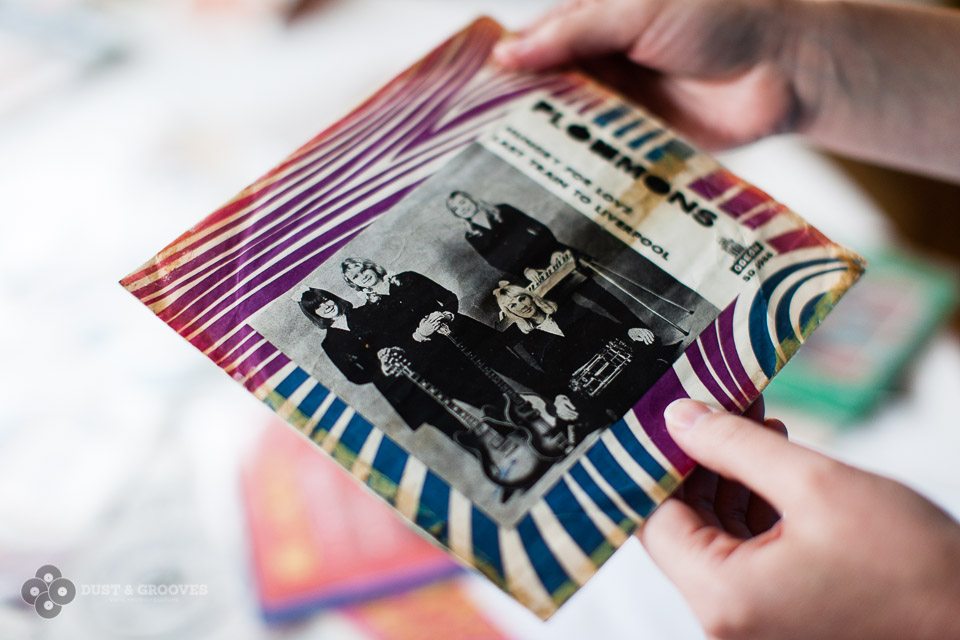
What other differences are there between collecting 45s and LPs? Are the collectors themselves interested in something different? Do they see music history differently?
I remember playing in an all-girl band as a teenager and releasing a couple of 45s on friends’ labels. A full LP would have been unthinkable for my band and I think the same could be said for a gazillion other small-time bands who may have only written a handful of songs or didn’t have enough money to fund an LP. The 45, in addition to being the format of choice for the single, was also the staple of the independent scene. Anyone could press a 45 fairly cheaply without a record label and sell it at local record stores and gigs. So I think any collector interested in music outside the mainstream (like indie bands, a small-town singer with no major label ambitions, local punk bands, etc.) as well as the heart of the mainstream (hit singles), will naturally gravitate towards the 45.
LP collectors seem to have the most options, at least in terms of record stores and places to dig, but they probably also have the most competition. Does that seem accurate?
I’ve definitely found that record shops are carrying fewer and fewer 45s these days but I think the competition is fierce for any rare, desirable record, be it a 45 or an LP. I’ve been in brutal bidding wars over 45s, often because a girl group record I’m after got swept up in the Northern soul scene and quadrupled in demand and price. It does still amaze me that a single 45 (two songs, no liner notes, no artwork) can go for hundreds or even thousands of dollars. I’ve had to delete 45s from my want list due to the insane price tags.
Do you have a comfort record, one you can always go back to?
Presenting the Fabulous Ronettes Featuring Veronica LP on Philles. It opens with “Be My Baby” and you’re practically back in the womb. It’s the sound of Ronnie Spector in love and one of the most gorgeous songs ever written. Every song on the album is either a single or could’ve been a single. “All killer, no filler!” as they say. It’s comforting to know that even on the darkest of days, I’ll always have the Ronettes.
You can’t always judge a record by its cover. Show me an album or two that boasts great music inside a terrible cover.
I don’t know what happened between the ’60s and ’70s but the quality of artwork in the ’70s took a drastic nosedive. Gone were the modernist fonts, the kaleidoscopic colors and the richness of the photos. It was as though everything went through a budget cut and sleeve designs were suddenly given to the interns. I’d love to know who listened to “Porque Te Vas,” a catchy-as-hell stomper from Spanish pop singer Jeanette, and thought “green! ugly boxes! terrible font!” There’s not one element in that sleeve that is remotely appealing to the eye, nor does it give the buyer any indication of the spectacular single inside.
Any unique packaging, shapes or coloured vinyl?
Thank god for the Japanese! I thought my stash of France Gall EPs were visually stunning but they have nothing on Japanese sleeves from the ’60s.Reiko Ohara’s “Peacock Baby” on Victor from 1968 is the most gorgeous record in my collection. It unfolds into a 14” sleeve with the Japanese actress/singer in a peacock-patterned silver suit, holding a feather, surrounded multi-colored Japanese characters. The 45 “gatefold” was very common in Japan, usually with a stunning photo on one side, and the lyrics on the flip. The only downside to such beautiful artwork is that the sleeves are often far more exciting than the records themselves.
Tell me about a dollar bin record you would never part with.
Barbara Chandler’s “How Can I Say No To You?” on Musicor from 1968. I found this in a dollar bin in Toronto, Canada. I was sold after hearing the first note of the bassline. The combo of Barbara’s teen voice with such a heavy rhythm section is like nothing I’ve heard before.
Is there an artist or a label you’re trying to complete?
I’ve been collecting Gillian Hills records since first watching “Beat Girl,” but I’ve never been able to find her “Jean Lou” EP. It’s not that I’m particularly in love with this record, I’m just desperate to complete her collection. I tend to complete the more obscure girl singers like Donna Lynn,Billie Davis and Karen Verros, as opposed to the big hitters like Dusty Springfield and the Supremes whose records are scattered around the world in different formats and sleeves, thus making it a real task to track down everything they’ve ever released.
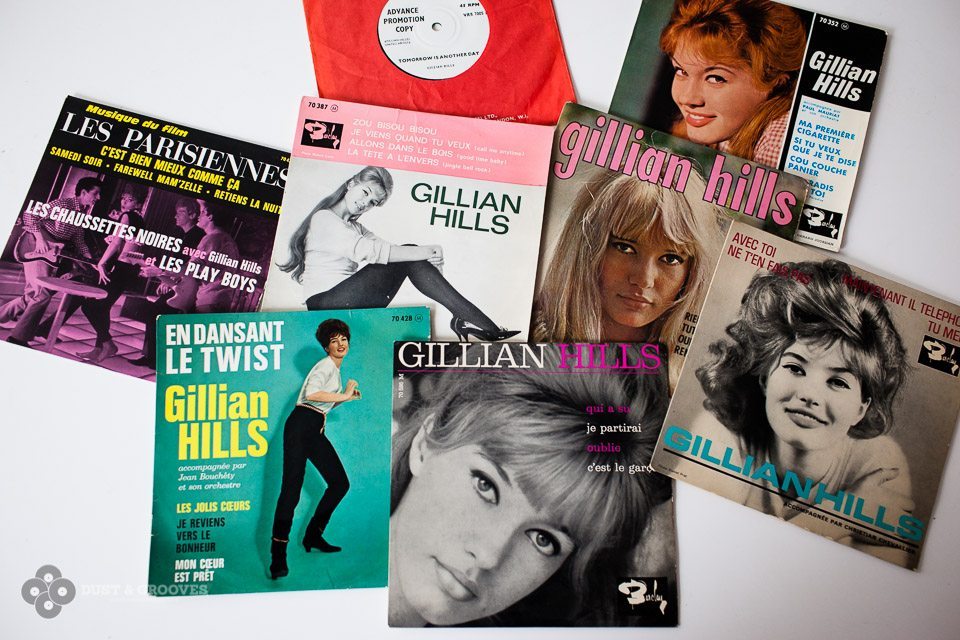
You often make a point of including the label when referring to an album. Is this important because of the pressing? Or because it contextualizes where something fits into a larger body? Do you think 45 collectors in general pay more attention to labels? Do you have a favorite label?
I wasn’t even aware that I included the labels! It must be because I’m so used to formatting my want list with the label (as well as release date if I have it handy). With 45s, there is so little information written on the record, so the label can often be your only guide. Some labels were often associated with super-star songwriters, like Dimension Records with Carole King and Gerry Goffin, and Red Bird with Ellie Greenwich and Jeff Barry. Every decade seems to have a handful of labels you can trust for quality songwriting and artists and the ’60s certainly had a whole lot!
What about digging buddies? Do you share or go solo?
I’ll occasionally have a friend in town who wants to go record shopping but 99% of the time, I’m digging solo. I used to dream of finding a partner with a similar obsession with records but that did become a reality at one point and I found that it wasn’t as dreamy in real life. There’s the fighting over the same records, getting collections mixed up, and less access to the stereo. My husband rarely decides what goes on the turntable, and I much prefer it that way!
What’s your saddest record story?
I spent a day helping out at Norton Records HQ a few weeks after Hurricane Sandy hit and it was heartbreaking to see how much of their stock had been destroyed. I ran into Billy at the Allentown Record Fair last week and it was so nice to hear that they made it through the worst of it. He seemed overwhelmed by and appreciative of all the support and the Norton benefits taking place worldwide.
List a record or two with the power to heal a broken heart. List a couple more guaranteed to make a broken heart even more painful.
Happy:
The Cookies’ “I Never Dreamed” (Dimension, 1964). Euphoria captured on record. Penned by the 1960s’ most underrated songwriter, Russ Titelman.
Tammy St. John’s “He’s the One For Me” (Pye, 1964). The giddiest of the Brit girl records. Made for skipping.
Yvonne Carroll’s “Mister Loverman” (Challenge, 1965). Mystery soul singer chronicles her loneliness over a backbeat that’s strangely uplifting.
Toto’s “Africa” (Columbia, 1981). I made everyone sing this at my wedding. Prog rock’s greatest pop achievement. I live for this record.
Sad:
The Shangri-Las’ “Never Again” (Red Bird, 1965). Regret-filled and shrill album-only track by New York’s toughest girl group.
Bessie Banks’ “Go Now” (Tiger, 1964). Original version of the Moody Blues #1.
The Cryin’ Shames’ “Please Stay” (Decca, 1966). Joe Meek-produced Merseybeat group covers the Drifters. Utterly devastating.
Sheila Ferguson’s “Don’t (Leave Me Lover)” (Swan, 1965). Pleading ballad by one of the longest serving members of the Three Degrees.
What do you think about Brigitte Bardot’s singing abilities?
Up there with Mick Jagger and Bob Dylan.
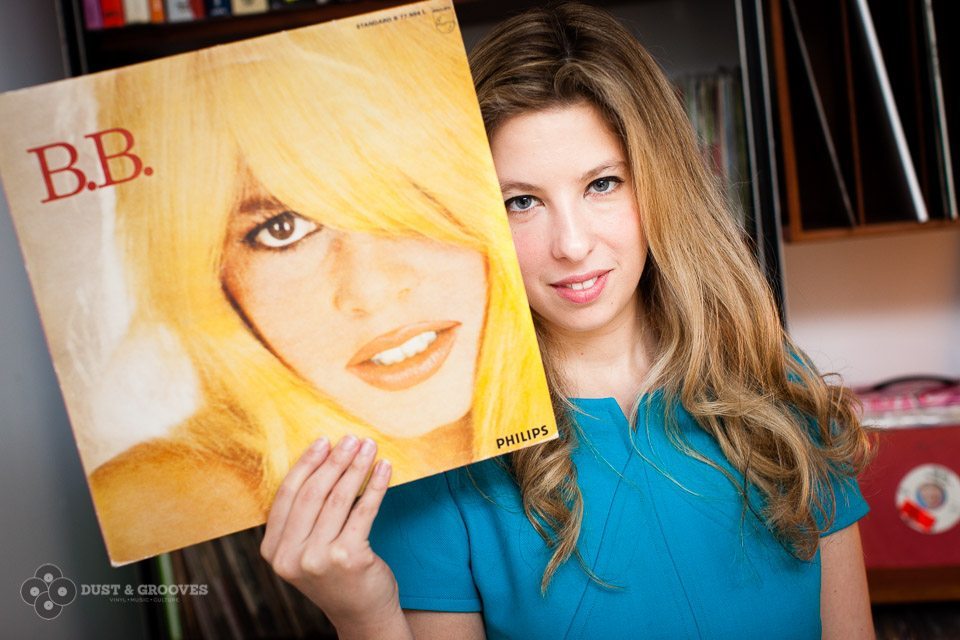
What about a record that got away from you.
I deeply regret allowing my records to pile up all over my floor and then stepping on one and cracking it in half. Also, I had scored a hard-to-find 45 bythe Ladybugs on the Del-Fi label on eBay and it arrived cracked straight down the middle. The seller wouldn’t accept any of the blame (I forgot to add insurance) even though he just packed the record in a cardboard box without any bubble-wrap or cardboard pieces for protection. I regret not aggressively going after the Mama Cats 45 on eBay because it’s unlikely I’ll see it again for another 10 years.
And I kick myself for not asking a DJ at Smashed! Blocked! (the now defunct and once brilliant ’60s party at Beauty Bar in NYC) the name of a mystery girl-psych record that I’ll probably never hear again.
What do you want to happen to your collection when you check out?
The question that makes most of us collectors shiver! And begs the further question, just what the hell are we doing spending our lives amassing a collection of records that we can’t take with us? And that’s when I pour myself a glass of wine, pull out a 45 and remind myself to live in the present.
I hope that my favorite records will be played at my funeral and then they will go to my husband or our future kids, who will be given strict instructions on how to keep them from warping.
What advice would you give to someone starting out?
Collect what you love and enjoy the journey from not knowing to knowing. Learn the record collecting lingo, find record shops, sign up for mailing lists, meet dealers and collectors, do research, travel to record fairs. It’s a very bizarre world that attracts a whole lotta crazy characters who will blow your mind with their enthusiasm and knowledge. As much as I wish it included more females, I consider myself lucky to be in the company of so many passionate men who feel the same way about music as I do.
Who would you like to see profiled next on Dust & Grooves?
More metal collectors!
Collectors will sometimes confess to thinking more about records they don’t have than records they do have. Can you identify with that? Can the psychology of being a completionist impede on the joy of listening?
I think most collectors are guilty of sometimes searching out records on their want list and then filing them away as soon as they’re in your possession. The thrill of the chase is so much fun and it offers a hefty dopamine rush that diminishes far too quickly. I usually go after records that I already know and love and have on some other format. Of course I much prefer to own every song that I love on vinyl but I’d rather hear the song on an mp3 than not hear it at all.
The joy of listening far exceeds my need to have it on record. The song is the cake, the original vinyl record is the cherry on top.

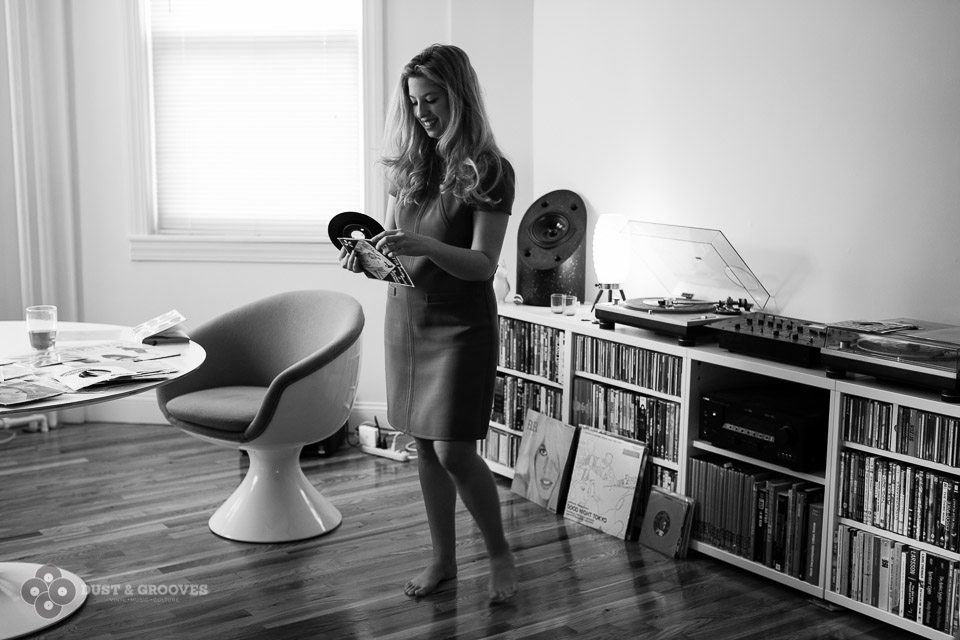
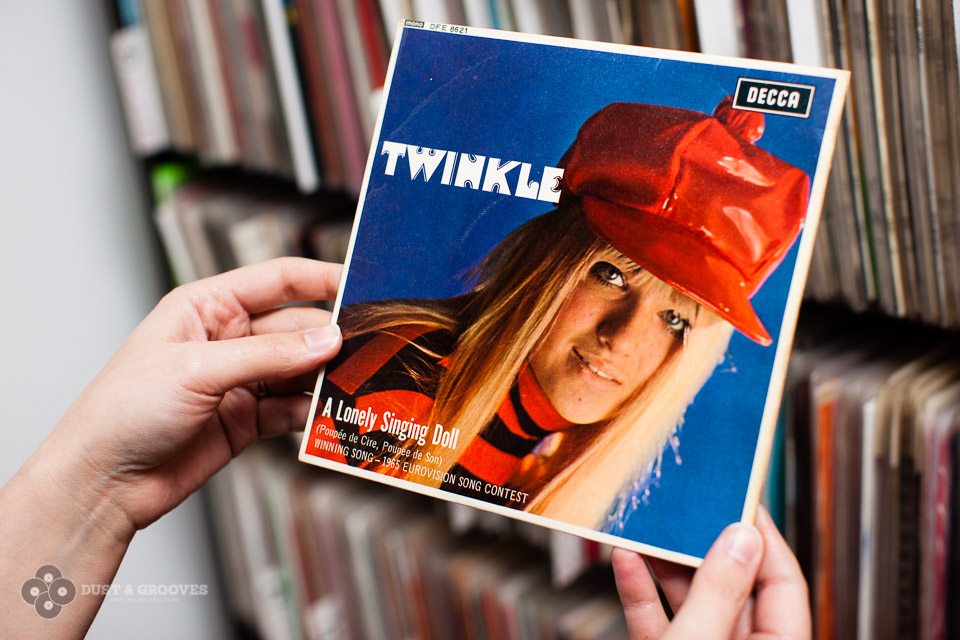
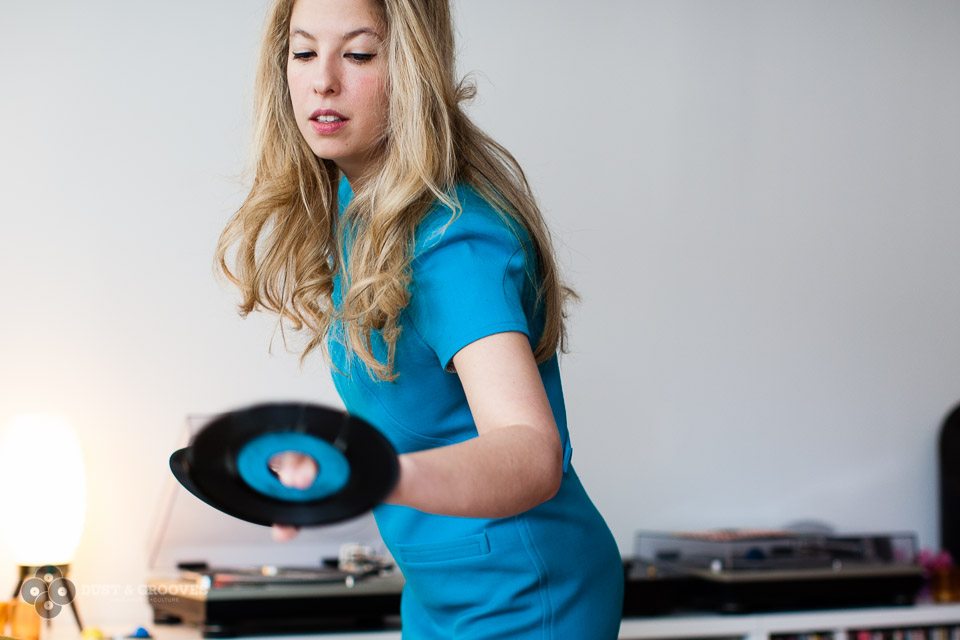
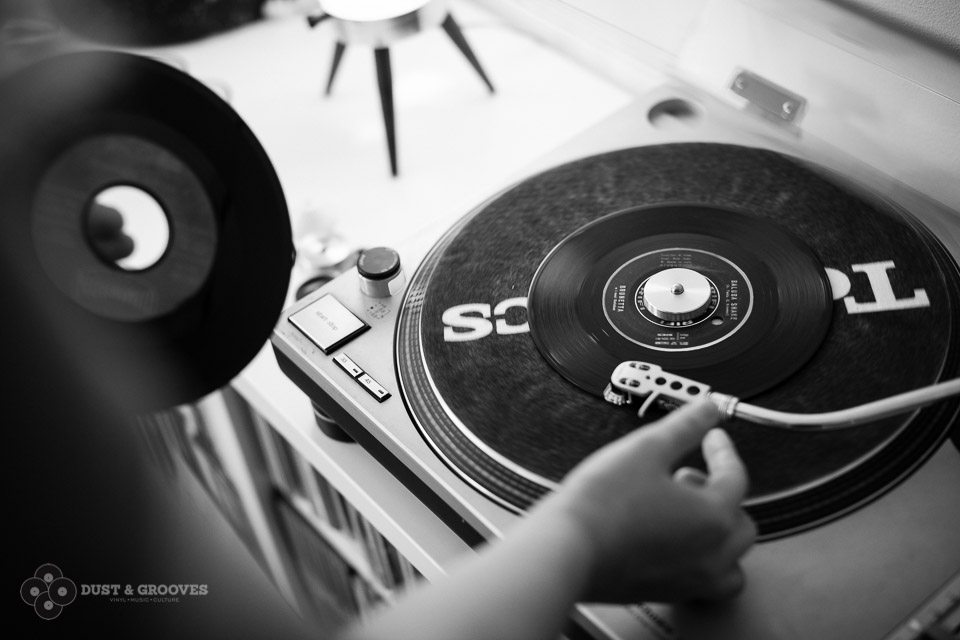
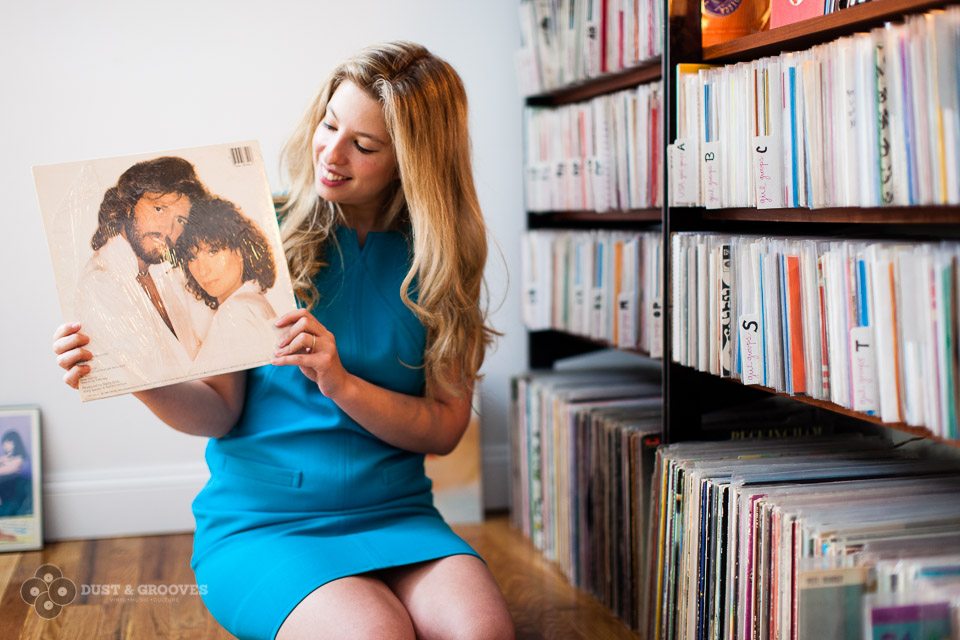
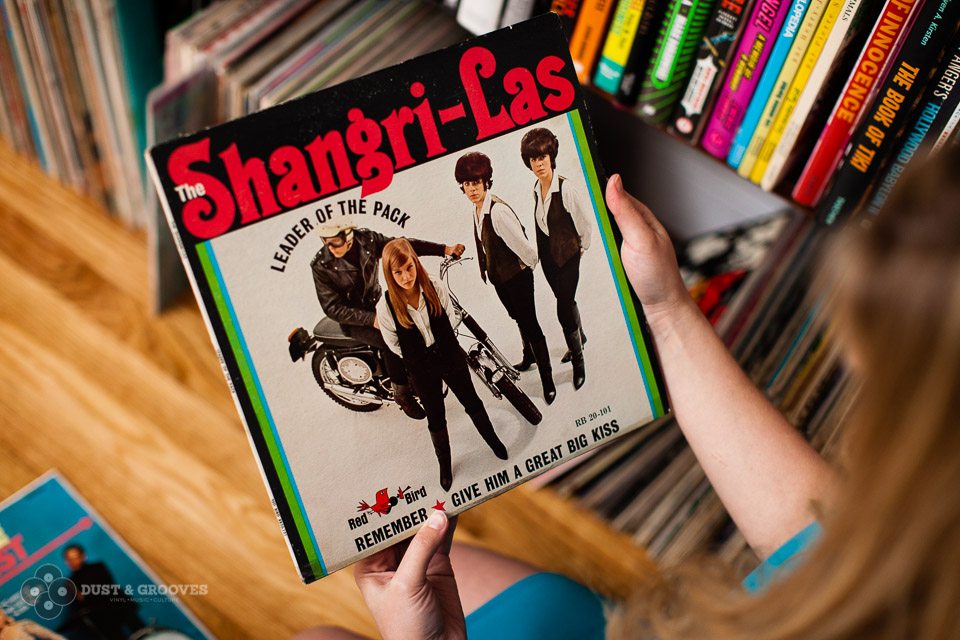
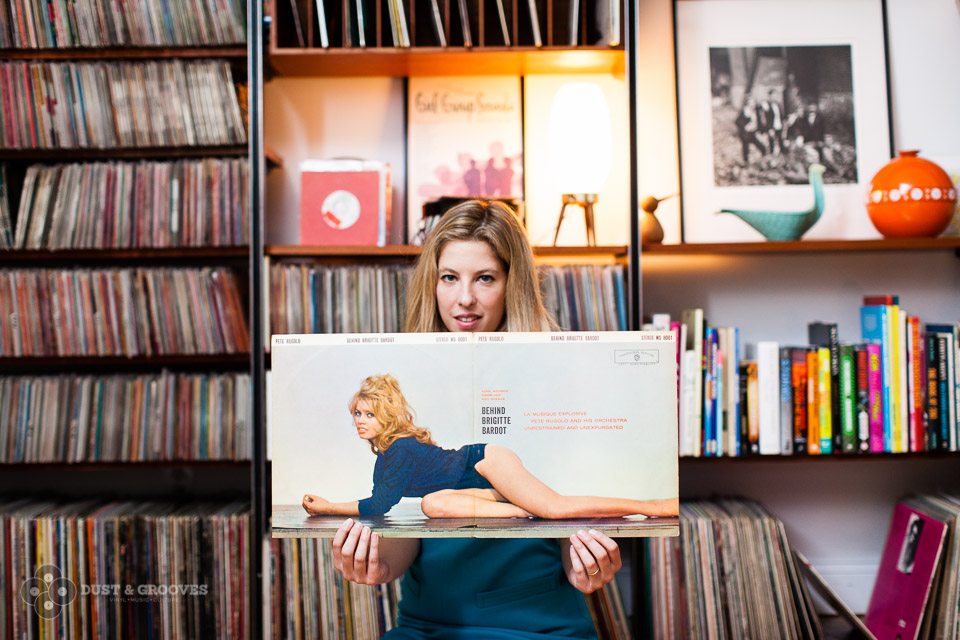
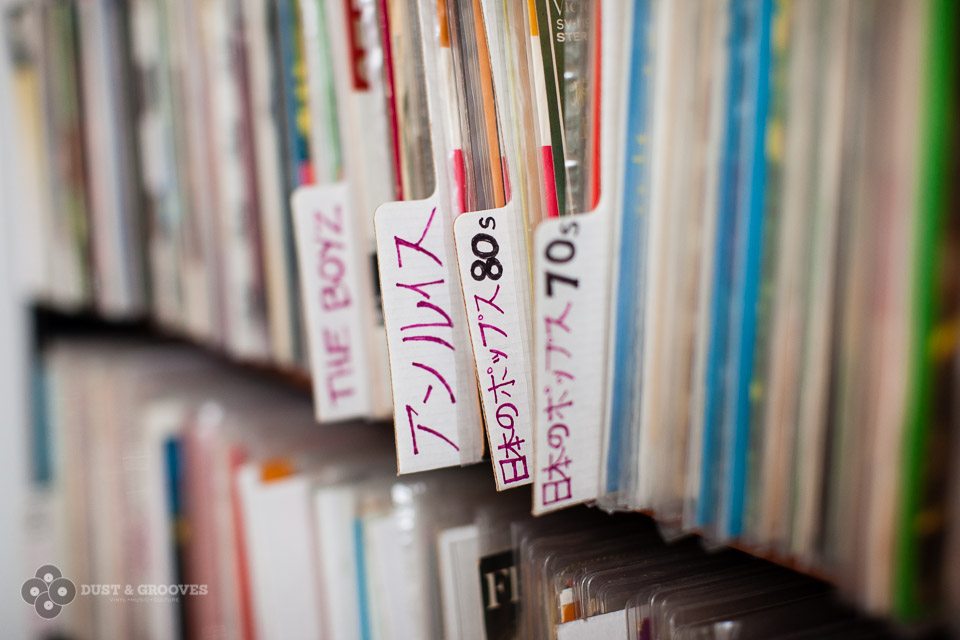
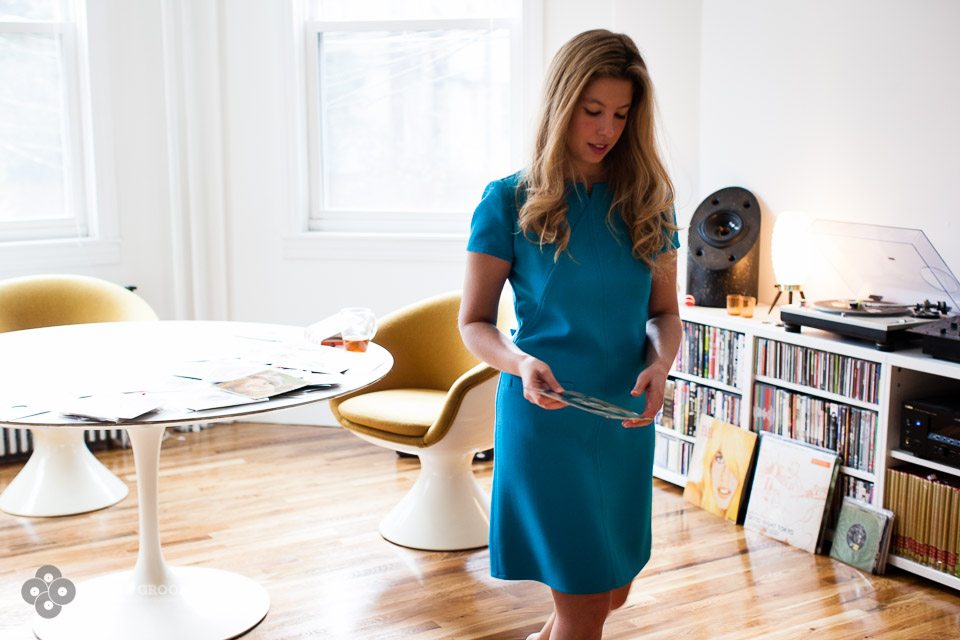
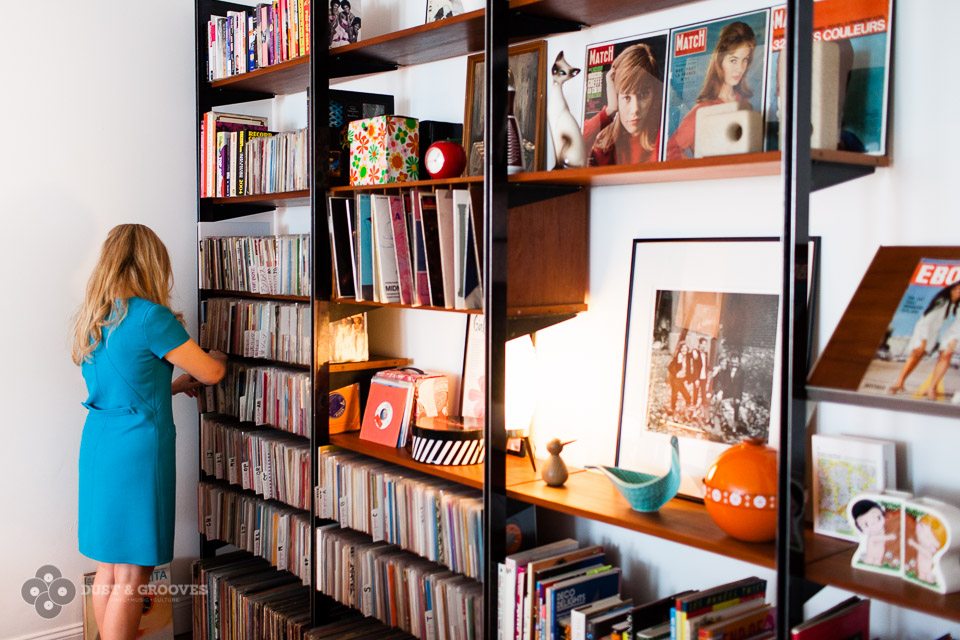
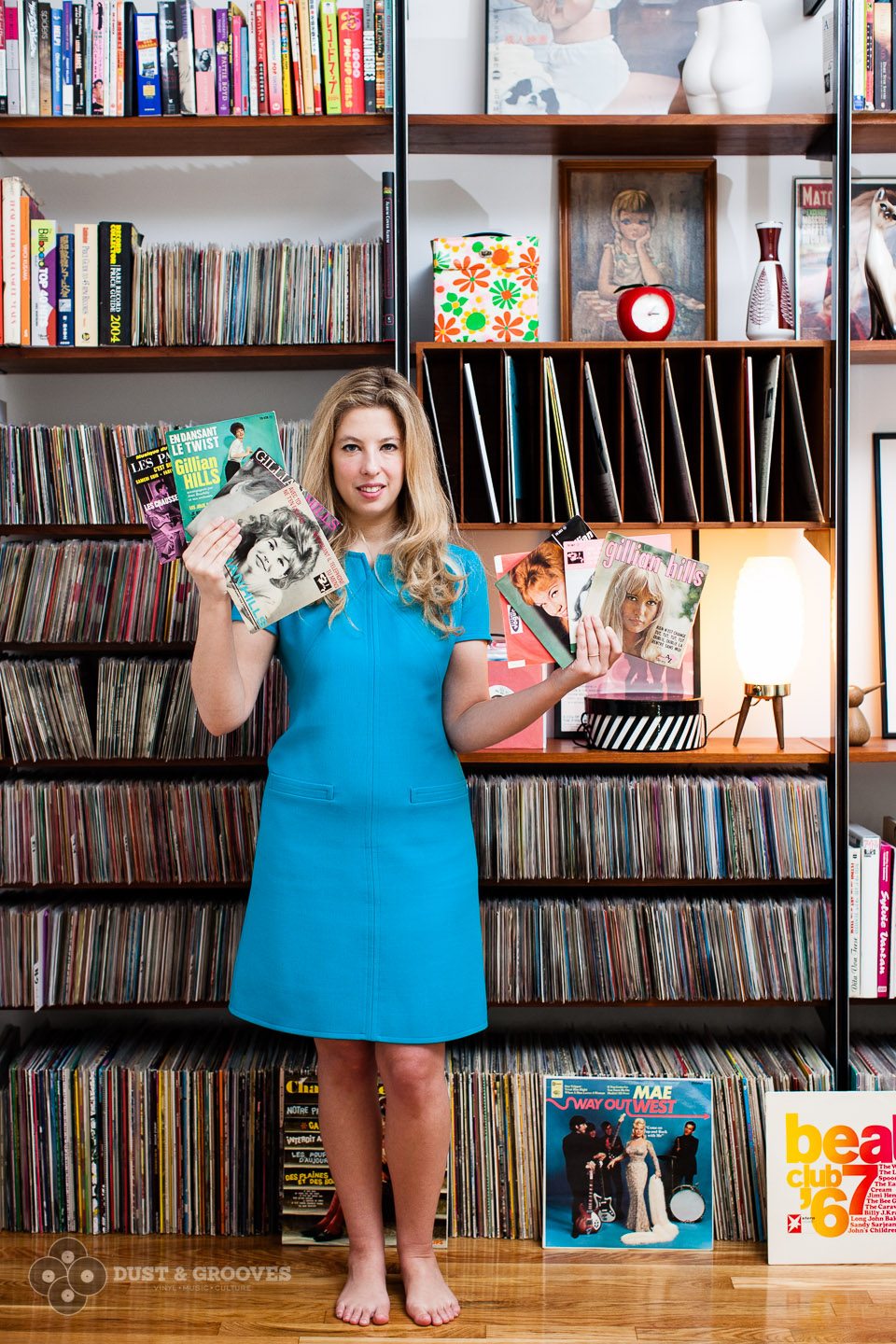
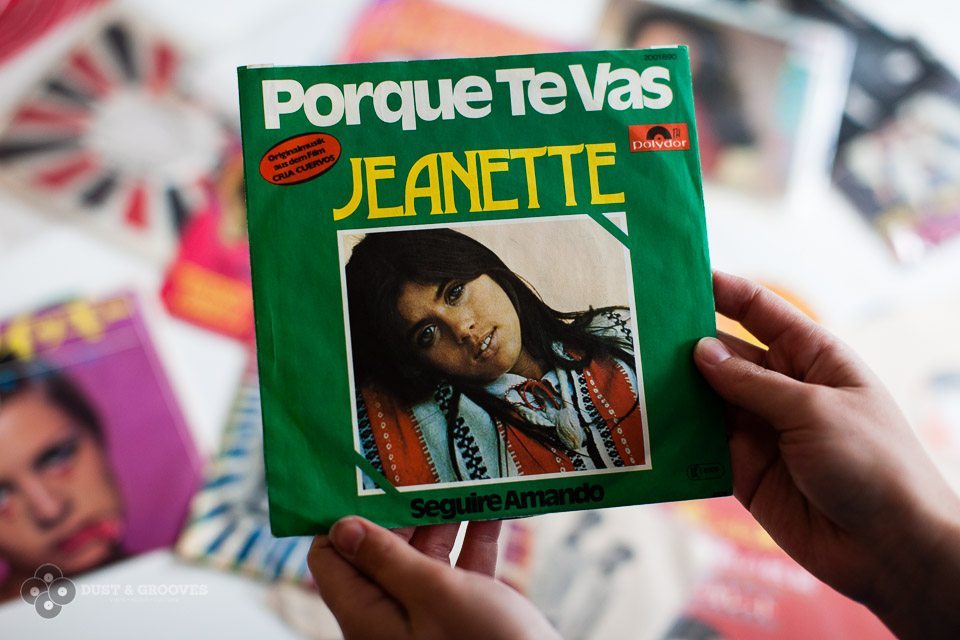
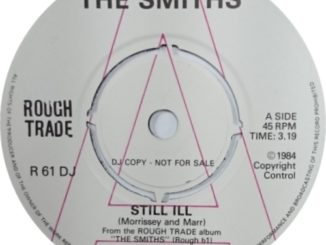


Be the first to comment